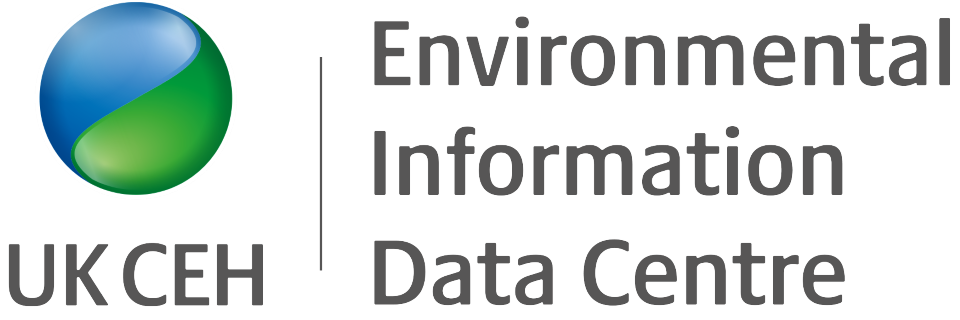
These data are held and managed by the Environmental Information Data Centre
For more details and to access the data, go to https://catalogue.ceh.ac.uk/id/e28ffc01-880d-423f-acb6-879b9fd4603a
For more details and to access the data, go to https://catalogue.ceh.ac.uk/id/e28ffc01-880d-423f-acb6-879b9fd4603a
Bhardwaj, C.L.; Dodd, J.C.; Bachiller-Jareno, N.; Tindall, I.; Moore, R.
Micro-organic herbicides data from rivers [LOIS]
https://doi.org/10.5285/e28ffc01-880d-423f-acb6-879b9fd4603a
Cite this dataset as:
Bhardwaj, C.L.; Dodd, J.C.; Bachiller-Jareno, N.; Tindall, I.; Moore, R. (2013). Micro-organic herbicides data from rivers [LOIS]. NERC Environmental Information Data Centre. https://doi.org/10.5285/e28ffc01-880d-423f-acb6-879b9fd4603a
Download/Access
PLEASE NOTE:
By accessing or using this dataset, you agree to the terms of the relevant licence agreement(s). You will ensure that this dataset is cited in any publication that describes research in which the data have been used.
© UK Centre for Ecology & Hydrology
This dataset is made available under the terms of the Open Government Licence 
Micro-organic herbicide levels in river water for various sites within the Humber and Tweed catchments collected as part of the Land Ocean Interaction Study project (LOIS). The dataset contains data for Phenyl urea and Phenoxy acid herbicides, measured as 2,4-Dichlorophenoxyacetic acid, 4-(4-Chloro-O-tolyloxy) butyric acid, 4-Chloro-O-tolyloxyacetic acid, Chlorotoluron dissolved, Diuron dissolved, Isoproturon dissolved, Linuron dissolved, Mecoprop dissolved. Phenyl urea herbicide data is available for twelve sites in the Humber catchment within 1994 to 1995 and 1994 to 1997 and for three sites on the Tweed catchment within 1995. Phenoxy acid herbicide data is available for six sites (S1, U3, N4, W5 and O6) over the period December 1994 to September 1995, for 7 sites (S2, D7, A8, C9, D10, T11 and O12) over the period December 1994 to February 1997 and 3 sites (TW13, TW14 and TW15) over the period January 1995 to September 1995. Attempts were made to sample the sites at weekly intervals. However sampling was halted for short periods when it was not possible to process the samples quickly. Linuron dissolved was only measured from April 1994 - October 1994. Samples were collected in chromic acid-washed 1 litre glass bottles. Herbicide levels were concentrated before being measured using High Performance Liquid Chromatography for Phenyl urea herbicides and Gas Chromatography for Phenoxy acid herbicides. Until November 1994, analysis was completed by the York University and the Institute for Freshwater Ecology, Wareham, laboratories. From December 1994 onwards the samples were dispatched to the Institute for Hydrology, Wallingford, for extraction and analyses.
Publication date: 2013-07-01
Format
Comma-separated values (CSV)
Spatial information
Study area
Spatial representation type
Tabular (text)
Spatial reference system
OSGB 1936 / British National Grid
Temporal information
Temporal extent
1993-09-07 to 1997-10-29
Provenance & quality
Phenyl urea herbicides were concentrated by using one of the following methods: solid phase extraction (SPE) using C18 (1gm, 6ml) (EC) (ISOLUTE) cartridges and eluting with ethyl acetate; as previous method except that the dried cartridge after loading was washed with 6ml of methanol: water:: 1:1 (to remove the impurities) before eluting the herbicides with methanol; liquid-liquid extraction with dichloromethane. Phenoxy acid herbicides were concentrated using liquid-liquid extraction with dichloromethane. Phenyl urea herbicides were measured by High Performance Liquid Chromatography (HPLC) with detection by a UV/VIS detector and phenoxy acid herbicides by Gas Chromatography (GC) with detection by a mass selective detector (GS-MS). One sample from each batch was randomly spiked with a mixed standard of urea and acid herbicides for comparison purposes. For all determinands certified grade standards of purity >99% were used. The laboratory at Wallingford takes part in WRC's AQUACHECK inter-laboratory harmonisation exercise for urea and acid herbicides. Data quality for both groups of herbicides is variable because of the nature of samples (Aire, Calder, Don and Trent were found to be highly polluted resulting in complex chromatograms), the level of herbicides present (mostly they are close to the detection limit) and difficulties in extraction especially in liquid-liquid extraction where they formed emulsions. A zip file of box-and-whisker plots are available for each determinand, showing the range of values (median, inter-quartile range, 1.5 * inter-quartile range, outliers) recorded at each site to enable prospective users to understand data quality.
Licensing and constraints
This dataset is made available under the terms of the Open Government Licence 
Cite this dataset as:
Bhardwaj, C.L.; Dodd, J.C.; Bachiller-Jareno, N.; Tindall, I.; Moore, R. (2013). Micro-organic herbicides data from rivers [LOIS]. NERC Environmental Information Data Centre. https://doi.org/10.5285/e28ffc01-880d-423f-acb6-879b9fd4603a
© UK Centre for Ecology & Hydrology
Supplemental information
British Oceanographic Data Centre's webpages for information on and data from the coastal and marine aspects of the LOIS project.
Correspondence/contact details
UK Centre for Ecology & Hydrology
Maclean Building, Benson Lane, Crowmarsh Gifford
Wallingford
Oxfordshire
OX10 8BB
UNITED KINGDOM
enquiries@ceh.ac.uk
Wallingford
Oxfordshire
OX10 8BB
UNITED KINGDOM
Authors
Bhardwaj, C.L.
Centre for Ecology & Hydrology
Dodd, J.C.
Centre for Ecology & Hydrology
Bachiller-Jareno, N.
Centre for Ecology & Hydrology
Tindall, I.
Centre for Ecology & Hydrology
Moore, R.
Centre for Ecology & Hydrology
Other contacts
Rights holder
UK Centre for Ecology & Hydrology
Custodian
NERC EDS Environmental Information Data Centre
info@eidc.ac.uk
Publisher
NERC Environmental Information Data Centre
info@eidc.ac.uk
Additional metadata
Keywords
2-4-Dichlorophenoxyacetic acid , 4-(4-Chloro-O-tolyloxy) butyric acid , 4-Chloro-O-tolyloxyacetic acid , Agricultural Practices , Aire , Calder , Catchment , Chlorotoluron , Derwent , Diuron , England , herbicide , Humber , Isoproturon , Land Ocean Interaction Study , Linuron , LOIS , Mecoprop , Nidd , Ouse , Phenoxy acid , Phenyl urea , Swale , Tabular , Time Series , Trent , water quality , Water quality , Water Quality
Last updated
21 March 2025 10:50
